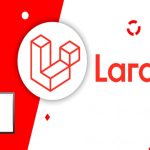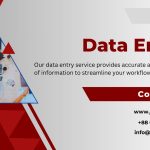Computer Basic Concept
@. Computer Memory
Computer memory is the storage space in the computer, where data is to be processed and instructions required for processing are stored.
Each location has a unique address in memory.
@. CPU Register:
CPU Register or processor register is a quickly accessible location available to a computer’s CPU.
It is fastest among the all types of data storage.
@. Cache Memory:
It is used to hold the data and program parts most frequently required to execute a program.
It consumes less access time as compared to main memory, so it is faster than main memory.
It is the portion of memory made of high-speed RAM (SRAM).
Cache memory has limited capacity to store data.
Widely used for Memory Caching.
Works on the “Principle of Locality of Reference”.
#. It acts as a buffer between the CPU and the main memory.
@. Primary Memory
Primary memory is computer memory that is accessed directly by the CPU.
@. RAM is used to hold the programand data during computation.
Such as: stores temporary data.
#. Volatile memory:
Data retains as long as a continuous power supply is provided.
#. RAM: Random Access Memory
#. SRAM: Static Random Access Memory
#. DRAM: Dynamic Random Access Memory
@. Any cell can be accessed in any order at same speed if address is known ROM
#. Non-volatile:
Information can simply be read by the user but cannot be modified.
Generally stores BIOS (Basic Input Output System)
#. ROM: Read Only Memory
#. PROM–Programmable Read Only Memory
#. EPROM– Erasable Programmable Read Only Memory
#. EEPROM– Electrically Erasable Programmable Read Only Memory
Units to Measure Computer Memory
@. Secondary Memory:
Communicate indirectly with CPU via main memory. So, it is slower than the main memory.
#. Non- volatile
Store data is permanent.
@. Magnetic Storage Devices:
It is sequential access memory.
- Hard Disk
- Floppy Disk
- Magnetic Tape
@. Optical Storage Devices:
- CD-ROM
- CD-Recordable
- CD-Rewritable
- DVD-ROM
@. USB Flash Drive
- Memory Cards
- Solid State Drive
@. Processing Devices:
Processing devices are parts of the computer that are responsible for processing or converting data into meaning full information.
- Processor
- Buses
- System Clock
@. Processor:
#. The CPU is traditionally referred to as a Processor.
#. The CPU is a computer chip located on the motherboard.
#. Performs processing and control activities performed by different parts of computer.
#. Main electronic circuitry in the computer.
#. Carries out the instructions contained in a computer program by performing arithmetic, logical, control and input/output operations.
#. Most modern CPUs are contained on a single Integrated Circuit (IC) chip and as such are called microprocessors.
#. A processor can have two or more CPUs or independent processing units called “cores” on a single chip and such processor is called a multi-core processor.
@. Buses:
Electrical pathway that transfers data and instructions among different parts of computer.
Main memory is directly/indirectly connected to the processor via a bus.
- Data Bus
- Address Bus
- Control Bus
@. Data Bus:
Data bus is Bidirectional because the Microprocessor can read data from memory or write data to the memory.
@. Address Bus:
Address bus is Unidirectional because the microprocessor is addressing a specific memory location.
@. Control Bus:
The control bus is a communication path in a computer that carries signals to coordinate and control the actions of different hardware components.
.
@. System Clock:
Used to synchronizing the activities performed by the computer.
@. Software:
Software is a set of computer programs which includes instructions, used for performing a particular task using hardware.
Software tells hardware: what to do? How to do?
@. System Software:
System software is “Background” software that helps the computer manage its own internal resources.
It enables the application software to interact with the computer hardware.
Such as: Operating System, Device Drivers,
Utility Software, Translators, etc
@. Application Software:
Collection of programs is written for a specific application.
@. Operating System:
System software helps in managing the resources of a computer.
Primary goal: make computer convenient and efficient to use.
Such as: MS-DOS, MS-Windows, UNIX, Linux, MacOSetc…
@. Tasks performed by OS:
- Process Management
- Memory Management
- File Management
- Device Management
- Security and user Interface
- Servicing the request by user
@. Types of OS:
- Batch Processing OS
- Multiuser OS
- Multi tasking OS
- Multi threading OS
- Time Sharing OS
@. Device Drivers:
System Software is responsible for proper functioning of devices.
Each device has a device driver associated with it.
Whenever computer system needs the use of device, the process or issues general commands to the driver of device.
When you buy an operating system, many device drivers are built into the product.
In Windows operating systems, a device driver file usually has a file name suffix of DLL or EXE.
@. Utility Software:
Used to analyze, configure and maintain the computer system.
Such as: Antivirus software, backup software, disk cleaners,
clean up tools, defragmentation tool etc.
@. Different between of low and high level language:
| No | Aspect | Low-Level Language | High-Level Language |
| 01 | Abstraction | Minimal abstraction closely resembles hardware instructions. | Higher level of abstraction, closer to human language.
|
| 02 | Readability | Less readable due to complex and hardware-specific syntax. | More readable with human-friendly syntax and structure.
|
| 03 | Memory Management | Requires manual memory management (malloc, free). | Automatic memory management (garbage collection). |
| 04 | Portability | Less portable, code is closely tied to specific hardware. | More portable, code can be used on different systems with minor modifications. |
| 05 | Efficiency | Generally more efficient as it closely maps to hardware operations. | May be less efficient due to abstraction layer, but optimizations are done by the compiler. |
| 06 | Development Speed | Slower development due to detailed coding requirements. | Faster development due to higher-level constructs and libraries. |
| 07 | Examples | Assembly languages
(x86 assembly) |
C, C++, Java, Python, etc |
#. Malloc and free are functions commonly used in programming, particularly in languages like C and C++, to manage memory dynamically during runtime.
@. Levels of Programming Languages:
@. Low level Language:
- Machine Language
- Assembly Language
@. High level Language:
#. Specific Purpose Language – LISA, Prolog, etc
#. General Purpose Language – C, C++, Java, etc
@. Different between of portal and non-portal device:
| No | Aspect | Portable Devices | Non-Portable Devices |
| 01 | Mobility | Designed for easy mobility and use on-the-go. | Generally meant for stationary use. |
| 02 | Size | Compact and lightweight. | Compact and lightweight. |
| 03 | Power Source | Often battery-powered. | Typically connected to power outlets. |
| 04 | Connectivity | Wireless and wired connectivity options. | Mainly wired connectivity options. |
| 05 | Usage Scenarios | Travel, outdoor activities, remote work. | Travel, outdoor activities, remote work. |
| 06 | Durability | Often built with durability in mind to withstand travel. | Focus on functionality and robustness.
|
| 07 | Examples | Laptops, smart-phones, tablets, portable speakers. | Desktop computers, home appliances.
|
@. Machine Language:
First Generation Language
Instructions are represented by combinations of 0’s and 1’s.
Programs are executable, can be run directly.
Requires memorization of binary codes so difficult to learn
Machine Dependent Codes, not portable
@. Assembly Language:
Second Generation Language
Machine language instructions are replaced with simple pneumonic abbreviations (like ADD, MUL, DIV, etc.).
Programs need to translate into machine language.
@. Assembler:
Translate assembly language statements into machine language codes.
@. Types of Assembler:
- Single-pass Assembler
- Two-pass Assembler
@. High-Level Language
Consist of set of English like statements, it makes programming easier and lesser or-prone.
Languages are not closely related to internal characteristics of computer.
@. Two Categories:
Specific Purpose Languages (LISP, Prolog etc…)
General Purpose Language (C++, JAVA, C etc…)
#. Source File – nur.c
#. Object File – nur.o
#. Header File – nur.h
#. Executable File – uur.exe
@. Compiler:
The name compiler is primarily used for programs that translate source code from a high–level programming language to a lower level language (e.g., assembly language, object code, or machine code) to create an executable program.
Compiler resides on a disk or other storage media, when a high-level program is to be compiled. Compiler is loaded into main-memory.
@. Interpreter:
Interpreter is converted high-level language
code into corresponding machine code.
Instead of entire program, one statement at
a time is translated and executed immediately.
@. Linker/ Link Editor/ Binder:
In high-level language built-in library functions need to be linked to the library. This is done by Linker.
Sometimes, programs are divided into modules. These modules are combined and assembled and object module is generated.
Linker has the responsibility to combine/ Link all modules and generate a single executable file of the source program.
@. Loader:
@. What is the complete process of compilation?
@. What is the complete process of creating and running code?vvvvvvvvvvvvvvvvvvvvvvvvvv






Leave a Reply